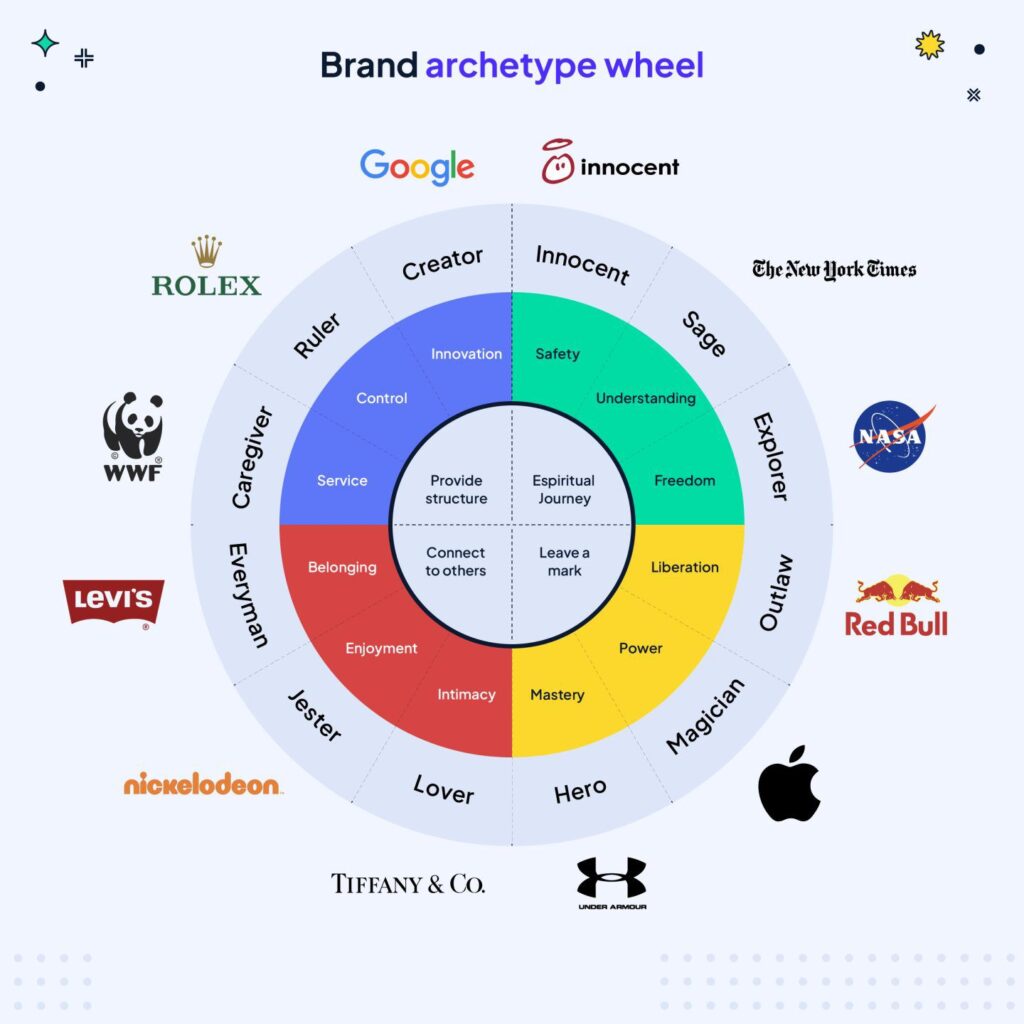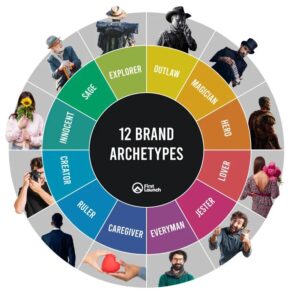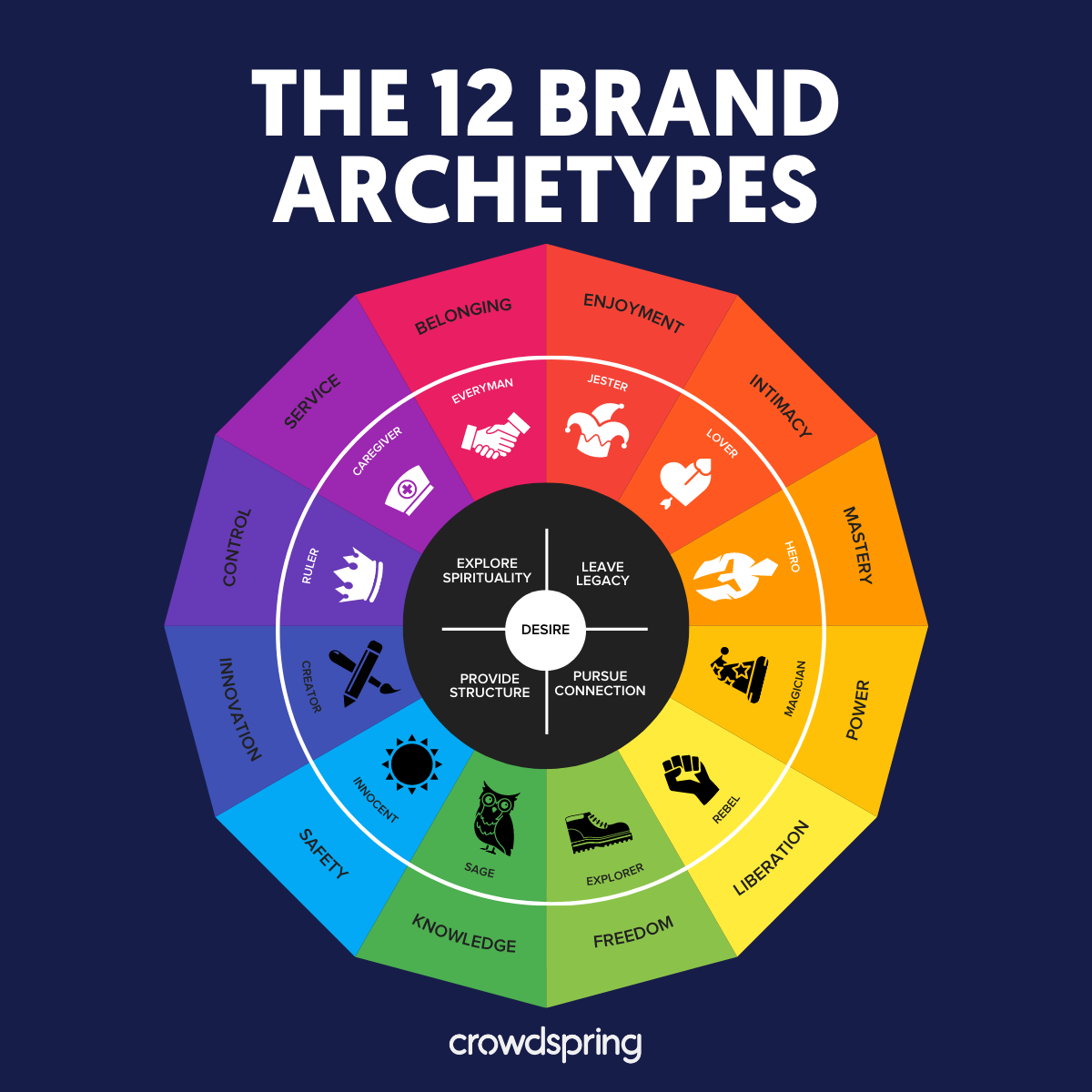Understanding Brand Archetypes and Why They Matter
In branding, consistency is everything, but consistency without personality falls flat. That’s where brand archetypes come in. Based on Carl Jung’s psychological theory, archetypes are universal, deeply ingrained character types that people instinctively understand. They give brands a relatable personality, making them more memorable and emotionally engaging.
There are twelve classic archetypes: such as The Hero, The Creator, The Caregiver, and The Rebel, each embodying a set of values, traits, and motivations. For example, Nike’s “Hero” archetype inspires achievement and overcoming obstacles, while Lego’s “Creator” archetype celebrates imagination and innovation. Identifying your brand’s archetype helps shape its tone of voice, visuals, and messaging so they all work in harmony.
The importance of an archetype lies in its ability to humanise a brand. Consumers connect more deeply with stories and personalities than with features and specifications. A well-chosen archetype ensures that every interaction, from social media posts to product packaging, feels aligned with a distinct personality. This alignment builds familiarity, trust, and emotional loyalty over time.

Without a defined archetype, brands often struggle with inconsistent messaging, shifting identities, and weak recall in the consumer’s mind. On the other hand, a brand with a strong archetype doesn’t just sell products, it tells a consistent story that people want to be part of.
How to Identify and Apply Your Brand Archetype
Finding your brand’s archetype starts with self-discovery. Look at your core values, mission, and the emotional reaction you want to inspire. If your goal is to empower customers to reach their potential, The Hero may be your fit. If you want to challenge the status quo, The Rebel could be the archetype to guide your voice and visuals. This process often involves market research, competitor analysis, and customer surveys to ensure your choice resonates with your audience.
Once identified, the archetype must be applied consistently. This means aligning your language, design, and actions to reflect that personality. For instance, a Caregiver brand should use warm, empathetic language, soft visuals, and demonstrate genuine support through community initiatives. A Magician brand, on the other hand, should spark wonder, surprise, and transformation in its messaging and customer experiences.

Storytelling is the most powerful tool for bringing an archetype to life. Embed the archetype’s traits into your brand’s narrative; through advertising, social content, and even how your team interacts with customers. Over time, this consistency shapes consumer expectations and strengthens brand recall.
It’s also important to evolve without abandoning your archetype. As markets and customer preferences change, adapt your messaging while staying true to the underlying personality. This balance ensures relevance without losing the emotional anchor that makes your brand memorable.
Final Words
A well-defined brand archetype is more than a creative exercise; it’s a strategic asset. By tapping into timeless human instincts, it creates emotional connections that drive recognition, loyalty, and advocacy. In a competitive market, knowing who you are and expressing it with clarity can be the deciding factor between being noticed and being forgotten.
Read Also: Minimalist vs. Maximalist Design: Which Works for Your Brand?


3 Comments
[…] Read More: Brand Archetypes: How to Find and Use Yours […]
[…] Read also: Brand Archetypes: How to Find and Use Yours […]
[…] Read Also: Brand Archetypes: How to Find and Use Yours […]